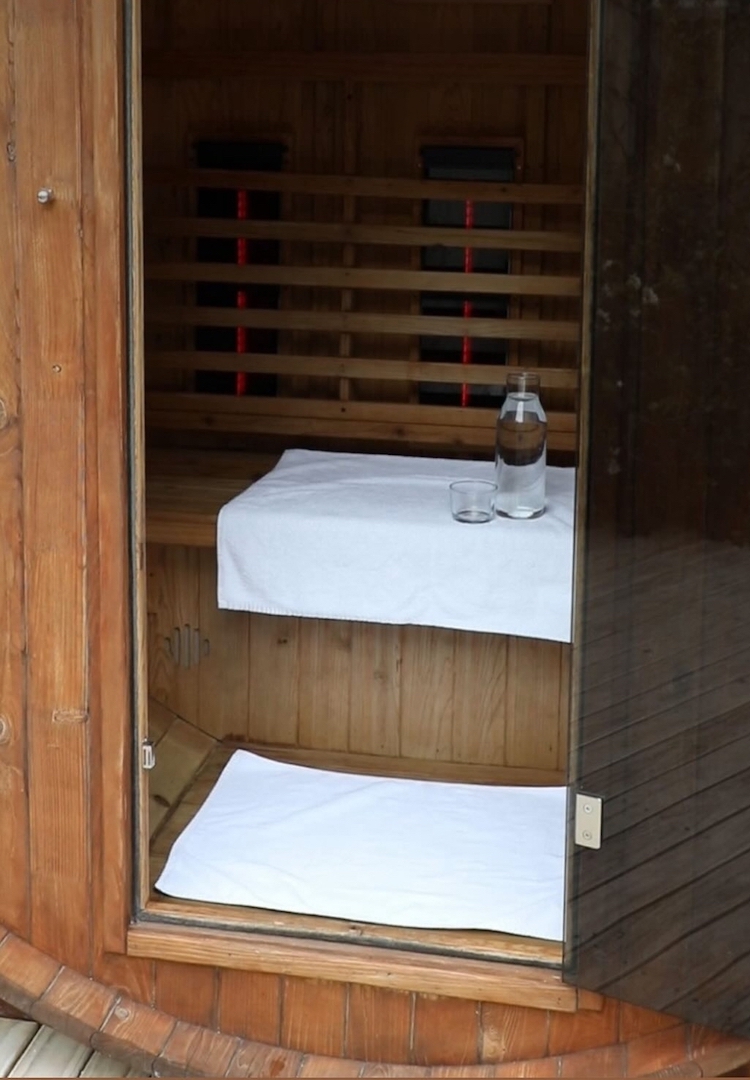I tried transcranial magnetic stimulation to treat my stubborn depression
WORDS BY CAT FORSYTH
“The sensation was strange and unfamiliar; it was like someone was knocking on the side of my head very rapidly.”
I never thought of myself as a particularly stubborn person, (although my family would disagree), but sitting in my psychiatrist’s office, that’s what I was hearing. My depression was stubborn. It was a long, lingering – and apparently stubborn – form of depression that had hung over my childhood and adolescence.
The psychiatrist explained that stubborn depression, otherwise known as treatment-resistant depression, means that the regular methods of treatment for the illness, like counselling and antidepressants, weren’t working. My stubborn depression was showing no signs of leaving, and I was running low on energy and hope. My psychiatrist brought up the option of what was a relatively new treatment at the time (this was in very early 2020), called transcranial magnetic stimulation, or TMS.
Interested to hear how others navigate the world? Head to our Life section.
Because I’d tried more than three different antidepressants without any improvement, we decided that TMS was worth a try. My doctor was hopeful and encouraging about undertaking this new form of treatment. So, we left the appointment armed with pamphlets and a lot of googling to do.
The research
TMS is generally used for patients who haven’t responded to antidepressants and other mainstream treatment methods. It’s sometimes thought of as a gentler, non-invasive alternative to electroconvulsive therapy.
According to Harvard, because TMS “functions completely outside of the body”, it’s a less taxing and non-invasive therapeutic option. The treatment works by applying electrode stimulation to “parts of the brain that we know are involved in depression”.
At some facilities, there is an option to stay as an inpatient in a therapeutic environment while undergoing treatment, which usually occurs every day for about three to six weeks. Australia’s largest private mental health service, The Melbourne Clinic, offers TMS therapy for both inpatients and outpatients and explains that over the process of the treatment, “the changes in brain activity correct abnormal brain functioning that is associated with depression”.
My experience
Upon arriving for the initial session, I was taken through the basics of the procedure, including the risks and expected results. I got up on the chair – just like the one you’d find at the dentist – and lay back. In the room were my psychiatrist and a nurse to help him. As I lay down in the chair, my doctor began to measure and draw dots on my head. I was very curious about the process and queried everything the doctor did.
When I asked what the dots were for, he explained that because TMS works by targeting a specific part of the brain, it was paramount that the coil was on the correct part of my head (in my case, the dorsolateral prefrontal cortex, or the front-left side). They would ensure that the precise part of the brain was being targeted by doing these meticulous measurements.
The next step, called calibration, was meant to figure out how much of the magnetic stimulation I could tolerate. Because TMS can have some side effects (particularly in the beginning), such as headaches, muscle tingling or spasms, lightheadedness – and in some rare cases, seizures – they start you off on a smaller ‘dose’ of stimulation and progressively build it up.
The sensation was strange and unfamiliar; it was like someone was knocking on the side of my head very rapidly. It wasn’t pleasant, but it was completely tolerable. For me, the worst bit was that I couldn’t go on my phone. This was due to the chance that it might overstimulate my brain and induce a seizure (which is rare) but the doctors don’t like to take the risk. This initial consultation took about an hour. After this, I was all good to go and I was back the next morning to commence the treatment.
Groundhog day
For the following weeks, the mornings were always hazy and consisted of chai lattes and being driven to the clinic by my parents. A nurse would greet me and set me up on the chair, freshly sanitised, of course, because it was the beginning of the pandemic. The nurse would go through the routine of measuring and dot-drawing, placing the heavy metal coil on the side of my head, handing me the TV remote and then leaving me to it.
The only thing to watch on the television at the time of my regular appointment was the daily COVID announcements, something I got sick of very quickly. Instead, I opted to lie with my eyes closed, often drifting off into a light sleep, marred by the fluorescent lights and the smell of hand sanitiser.
After the 30-minute session, the treatment left me exhausted (an unwelcome addition to the depression fatigue that I already had going on), and because this was during the early, five-kilometre-limit stages of lockdown, I would crawl back into bed for the duration of the day. This dragged on for three weeks but because of the pandemic it began to feel pretty Groundhog-day, and I felt no better, despite the treatment.
After the treatment period was over, I was told that, hopefully, I would begin to notice signs of improvement in my depression over the next few weeks and months. I would love to say that things started to get better from here, but that wouldn’t be truthful. I was deeply disappointed when the weeks stretched into months and I felt worse, not better. I felt angry at myself that I couldn’t get better, and angry at my psychiatrist for giving me false hope. Not responding to this treatment for stubborn depression actually resulted in me spiralling even further into my illness.
I don’t need to go into it, but it was a fucking hard time in my life. Now, I can look back with grace and acceptance, but when it was happening I felt like I was living in an inescapable hell. At the time, I used to scream angrily into my pillow “Why me? Why am I not getting better?”. But here’s how I see it now: in the same way that people respond to medications in vastly different ways, TMS didn’t work for me. I know other people who underwent the same treatment and saw great results. I still think it’s definitely worth a try if you’re in a position where medication isn’t working.
Recovering with different treatments
As for how I finally made it out of the hole of depression, it took some time. It wasn’t until years after trying TMS that I started to improve. I met a different psychiatrist who I love, and they put me on a new combination of antidepressants. Together we began other forms of therapy to target my specific problems.
Despite my disappointing experience, I haven’t written off TMS as a viable treatment option. If I ever found myself in desperate need of help for depression again, I would definitely consider undergoing the treatment. If you’re struggling with treatment-resistant depression, or want to look at other options, go in with an open mind. I’m of the do-anything-to-help-yourself school of thought, and if you’re lucky enough to be able to try TMS, should you need it, then give it a go.
If you or someone you know is struggling with their mental health, you can contact Lifeline on 13 11 14.













